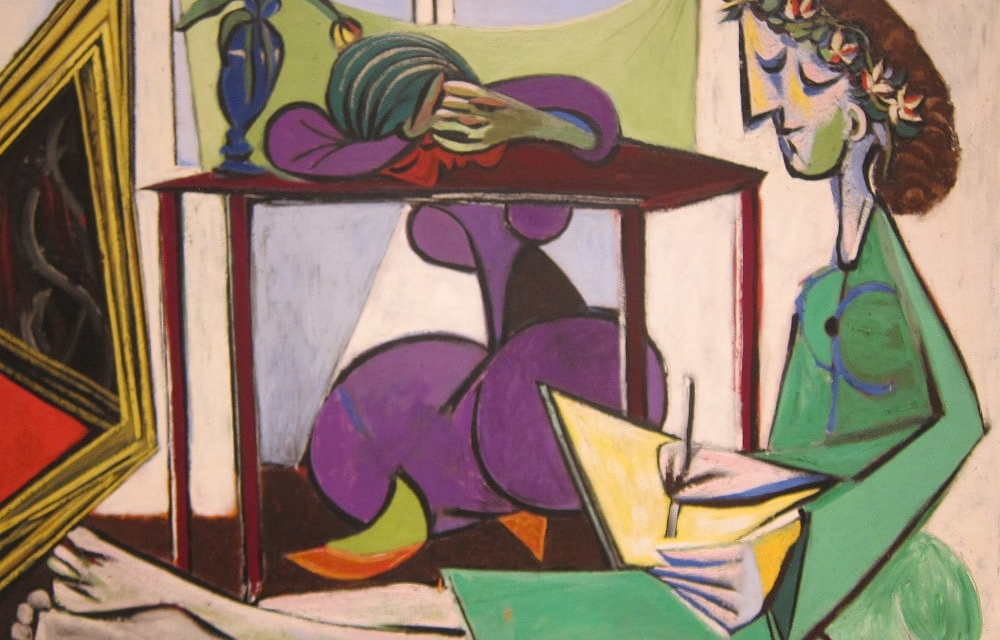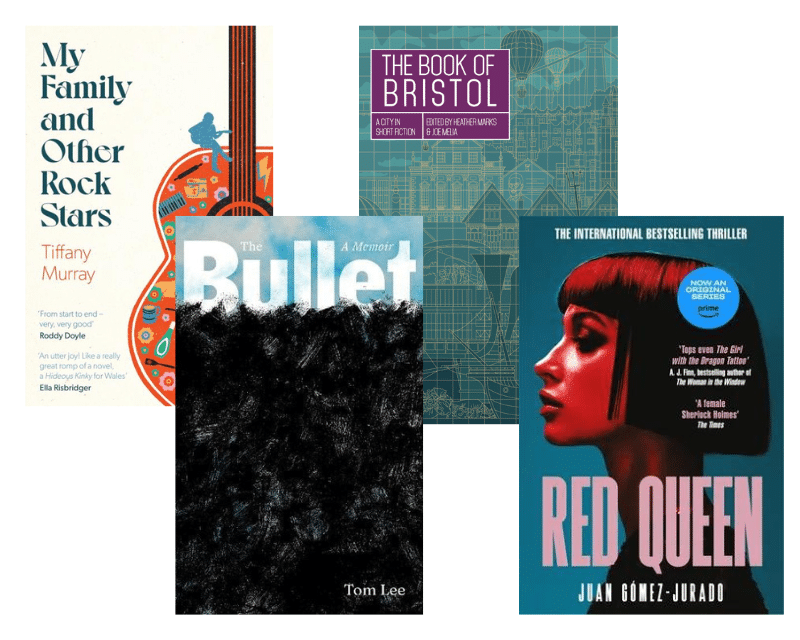- Collected
- Article
The Playwright And The Visual Arts
Bringing Picasso’s muses to life

- 7 August, 2017
- Brian McAvera
When I decided that I was going to write Picasso’s Women, I set myself a number of objectives. Each of the eight plays in the cycle would look at Picasso through the eyes of the woman he was with at the time. That meant that we would also look at the art he produced, the circumstances of its production, the dealers who were around, the circle of writers, poets, critics and hangers-on and so forth, not from Picasso’s point of view – which is what art historians tend to do – but from the point of view of the women involved. Secondly, I wanted to record the realities of an artist’s life. Thirdly, I wanted, as far as was feasible, to indicate to the audience the process of artistic creation; to demonstrate that this process is not some sudden divine revelation but is rather the product of continual hard work. And finally, I was determined that each of these plays should be structurally different, so that the entire cycle would be rather like a cubist collage. With Dora Maar for example, who suffered a nervous breakdown which was almost certainly precipitated by her relationship with Picasso, the form and imagery of her narrative would be much more radical, hallucinatory and fragmented than that of the quietly sensual Fernande Olivier.
If we were looking at Picasso and his work from the point of view of any of the given mistresses or wives, then it would become apparent that not only was the woman influencing the style and content of the work, but that she was often also contributing to it: Fernande Olivier’s odalisque qualities helped to create the ‘Rose’ period of Picasso’s work, while Eva Gouel’s dressmaking skills – her use of patterns, and cutting out templates, and her use of dressmaker’s pins – all helped to shape the Cubist period. If the women were being treated in chronological order – Fernande, Eva, Gaby Lespinasse, Olga Khokhlova, Marie-Thérèse Walter, Dora Maar, Françoise Gilot and Jacqueline Roque – then we were effectively covering the social and political history of the century, from the artist’s birth in 1881 to his death in 1973. What would also emerge would be the quite remarkably male-centric viewpoints of the art market and art history.
The literature on Picasso is vast. Apart from the art-history volumes, there are biographies, memoirs, books of photographic documentation, and reminiscences. This is apart from the thousands of references to Picasso and his friends, mistresses and wives in the biographies and memoirs of writers, poets, critics, and historians. And what about the entire libraries of books which chart the history of art during Picasso’s lifetime: how can you evaluate him unless you have at least a solid map of the territory? To be able to empathise with your characters you need to handle the newspapers and magazines that they read, the invitations to a vernissage that they received, the tickets to the theatre or a concert. You need to see the posters they looked at, know what kind of shops they went to, research the cafés that they patronised.
Then there is the practical side: going to the places where Picasso lived and worked; seeing the art that he produced; delving into archives in museums and libraries. This kind of research is often crucial. For instance, I only really understood Eva Gouel, who was with Picasso in the period 1910–1915 – she died in 1915 – when I went to what had been their flat in Montparnasse. Eva had contracted tuberculosis and I wondered what it must have been like for her, trying desperately to conceal this fact from Picasso, who had a horror of illness. When I walked around Montparnasse to search for the address, I did not expect to find that the front window of her second-floor flat directly overlooked Montparnasse cemetery…
At the time of writing the cycle, I had been in and out of artists’ studios for the best part of twenty years on a weekly basis, doing interviews, writing reviews and articles, curating exhibitions, producing books and catalogues. By and large, artists’ studios, and often their working methods, have changed little over the centuries. Picasso would have been quite at home in Titian’s studio, or in a 21st century one. Likewise the psychology of the artist, in relation to work, patrons, buyers and so forth has changed little. Playwrights and visual artists have much in common: they both create streams of images. They acquire study material (working sketches and the like), they refine it stage by stage, and then they produce the final image which will often be worked on over a period of months or even years. If the staged play is a translation from the two-dimensional page to the three-dimensional stage, then the artist’s version is a translation from the three-dimensional landscape or human figure to the two-dimensional canvas. In both cases the optimum word is ‘transformation’.
When I was researching my Picasso plays, I noticed that in memoirs of the period, the same anecdotes, often in wildly differing versions, cropped up again and again. Biographers often repeated these anecdotes as if they were fact, seemingly unaware of the different, and often conflicting, versions. Was the teller a friend, an enemy, a storyteller who liked to embellish the truth, someone whose memory was faulty, or someone who had a vested interest in building up the subject? When I looked at, for example, the supposedly magisterial tomes of John Richardson, the doyen of Picasso biographers, it was not long before I realised that, for me, there was a very strong misogynistic bent to his narratives, one in which the women in Picasso’s life were routinely tarred as dumb, venial, and only in it for the money or the fame.
For example, it has been suggested that Fernande Olivier’s command of the French language was poor, and that she knew nothing about art as she failed to mention Les Demoiselles d’Avignon in her memoirs. Others, however, had commented on the elegance of her French (she had in fact taught the language), and even a basic perusal of her memoir would indicate that she wrote in a pellucid style. The comment that she was ignorant of art because she did not mention one particular painting tells us more about Richardson’s attitude to models than it does about Fernande. We know that Fernande had left Picasso for a number of months when he was making this particular painting, and also, as I speculated in the play, that she had had very good personal reasons for not wanting to discuss this period in her life.
Richardson considers that Olga Khokhlova, Picasso’s first wife, was stupid, ignorant of art, and a poor ballet dancer. A little research soon uncovered a rather different picture. Olga, far from being stupid, knew seven languages, and in the memoirs of a number of Diaghilev’s ballerinas, she was described as being the most intelligent one of all of them. As for ignorance of art, it turned out that her father was a major collector of avant-garde art and often brought her to artists’ studios, and that he was friends with Shchukin, one of the major avant-garde collectors of the time. As for the slur that she was a poor ballet dancer, even rudimentary research in the theatre archives would have revealed that Olga danced four featured roles for Diaghilev. Also according to Richardson, Françoise Gilot’s memoir was a nasty book in which she settled old scores, made Picasso talk in a peculiar fashion, and told us little about the man. In fact she was a painter herself who not only caught Picasso’s speaking voice very accurately but also recorded the successive stages that the artist went through in developing his compositions. Others, including the historian James Lord, who knew both her and Picasso, have called it a marvellous book and one of the very few which enriches our knowledge of the man.
So when it comes to writing, what does one do? As far as possible one tries to get inside the head of a Dora, an Olga or a Marie-Thérèse, and one observes events from their point of view, and not just from Picasso’s. When Picasso first met Marie- Thérèse, for example, she was seventeen, and he was forty-five—a huge discrepancy in age that art historians do not care to dwell on. This was a rich, famous and powerful individual who took advantage of a not particularly bright schoolgirl — one who had a pretty face and a voluptuous figure. By telling the story from her viewpoint, the amorality and misuse of power on the part of a man who thinks that he can do whatever he wants, becomes obvious. Likewise with Olga. Richardson claims that she nearly drove Picasso into a breakdown, but when we see what Picasso did to her, we understand that it was other way around! None of this detracts one iota from Picasso’s work as an artist. But art historians and biographers often tend to want their subjects to be on the side of the angels…
You might also like:
RLF Fellows’ News: May 2024
Publishing RLF Fellow Tom Lee’s new book, The Bullet, his memoir about family and mental health, has recently been published…
Her Majesty The Queen is announced as our new Royal Patron
To mark the first anniversary of Their Majesties’ Coronation, it has been announced Her Majesty The Queen will take on…
WritersMosaic & Jhalak launch The Review today
The first issue of The Review by WritersMosaic & Jhalak is out today. The Review is an editorially independent, 20-page…


